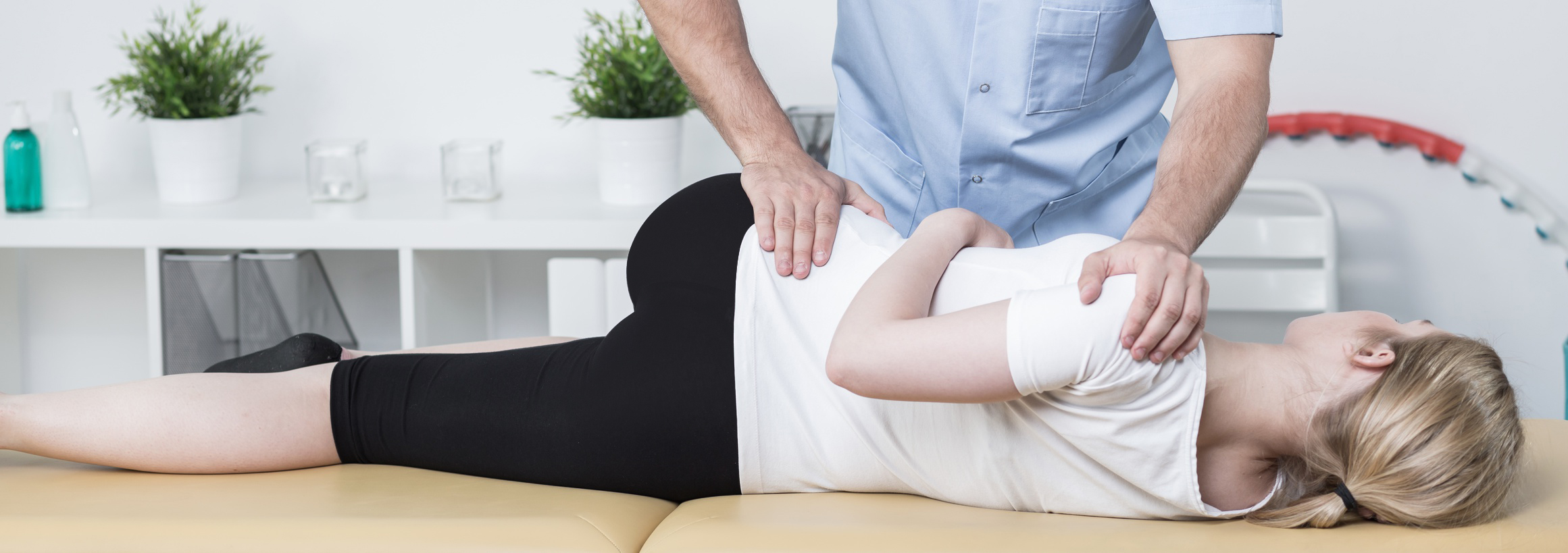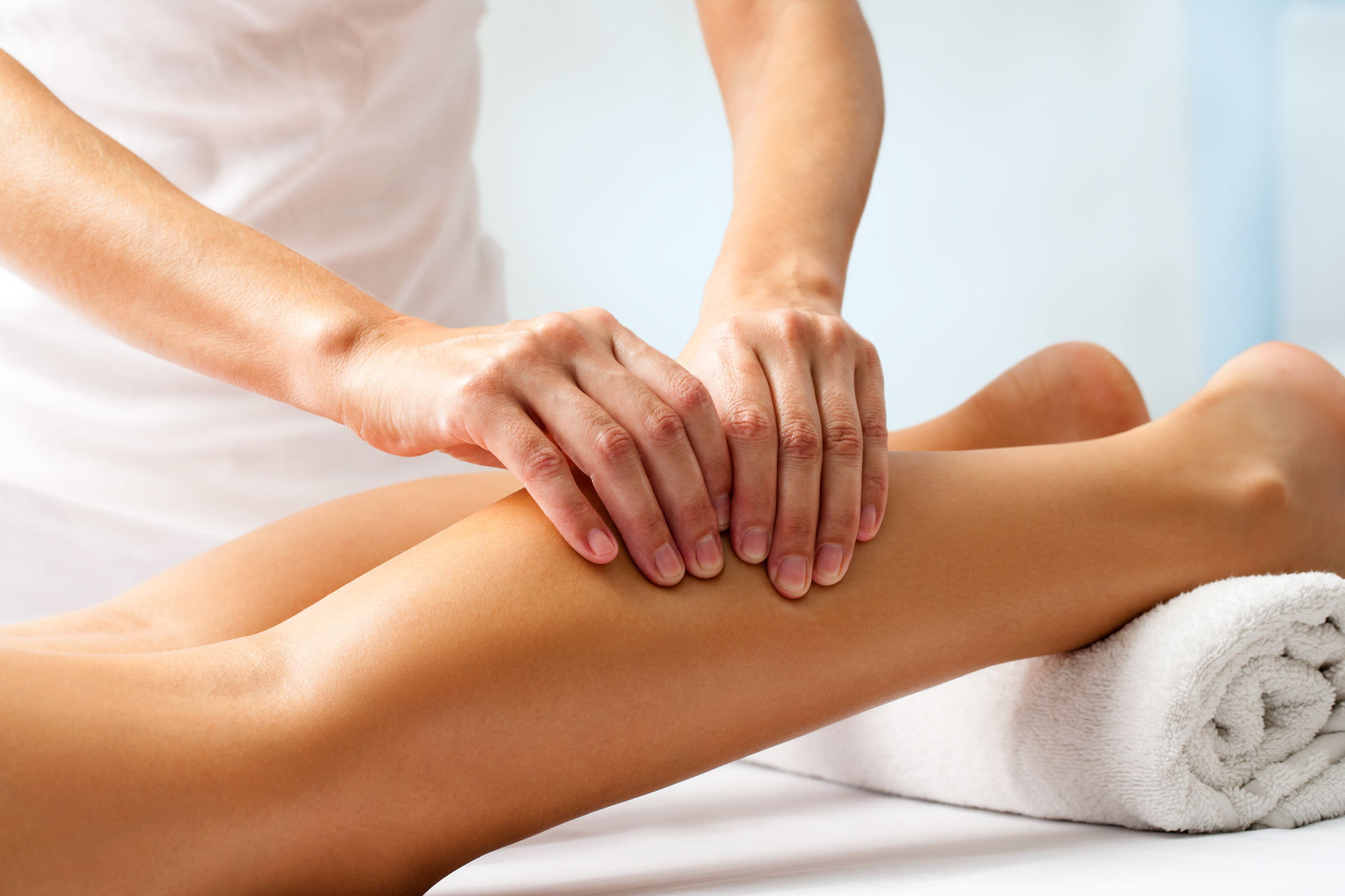Chiropractic Effectiveness
Cost Effective Health Care | International Studies Agree | References – Government Studies
Over the years, spinal manipulation, which is also referred to as adjustment, has undergone rigorous evaluation from researchers within the profession itself, and from the legislative, health care and scientific communities resulting in a significant body of evidence around the efficacy of spinal manipulation for musculoskeletal disorders such as back pain, neck pain and headache.
Cost Effective Health Care
Numerous governments have evaluated the effectiveness of chiropractic care both from a public funding perspective and in terms of establishing clinical guidelines for the management of back pain. One of the most thorough analyses of the scientific literature on chiropractic treatment of low back pain was conducted in 1993 by health economists at the University of Ottawa.
This report concluded that spinal adjustment applied by chiropractors is more effective than alternate treatments for lower back pain, and that there would be significant cost-saving to the health care system if more management of lower back pain was transferred from physicians to chiropractors.(1)
Recently, a major four-year study in the United States, published in the American Medical Association journal The Archives of Internal Medicine, concluded that benefit plan members with chiropractic coverage returned to work faster, had lower claim costs and experienced fewer interventions such as MRIs compared to plan members without chiropractic benefits.(2)
Similarly, a United Kingdom study published in the British Medical Journal concluded that adding spinal manipulation to current “best care” in general practice was effective and cost-effective for patients with low back pain.(3)
International Studies Agree
In addition to independent studies, there have been a number of international reports. One of the most significant reports was produced by the Clinical Standards Advisory Group (CSAG) in the UK in 1994. The CSAG guidelines for the management of back pain recommend spinal manipulation along with active exercise and physical activity to modify pain mechanisms and speed recovery.(4)
The 1997 New Zealand Acute Low Back Pain Guide is a government sponsored, evidence-based guideline based on an extensive review of the international literature and wide consultation with professional groups in New Zealand. The New Zealand guideline reinforced the CSAG recommendations by including adjustment as an appropriate treatment for pain relief and improvement in mobility and function for acute low back pain.(5)
The Danish Institute for Higher Technology Assessment (DIHTA) produced a report in 1999 on frequency, management and prevention of low back pain. DIHTA states that spinal manipulation is indicated for management of acute pain and to improve function, and should be considered for use in patients who have been experiencing pain for longer than two to three days. DIHTA also recommends that manipulation be considered for recurrent, chronic low back pain and for nerve root/disc conditions.(6)
Similarly, the U.K. Royal College of General Practitioners (RCGP) 2001 Clinical Guidelines for the Management of Acute Low Back Pain state that there is strong evidence that spinal manipulation can provide short-term improvement in pain and activity levels and demonstrates higher patient satisfaction than alternate treatments. The guidelines recommend that adjustment be considered for pain relief and for patients who are failing to return to normal activities.(7)
The Ontario Workplace Safety and Insurance Board (WSIB) guidelines for the treatment of chronic pain, published in The Clinical Journal of Pain supplement in December 2001, state that manipulation is more effective for chronic low back pain than usual care by a general practitioner, bed rest, analgesics or massage in the short to intermediate term.8 A 2004 review of the WSIB Program of Care for acute low back injuries found faster return to work and high satisfaction levels with chiropractic care.(9)
Studies in other countries have reached similar conclusions and the international medical literature contains a broad range of published studies attesting to the effectiveness and safety of chiropractic care for musculoskeletal complaints including back pain, neck pain and headaches.(10)
As research advances, evidence continues to accumulate to support the benefits of chiropractic care for a variety of conditions.
(1) Manga P, Angus D, Papadopoulos C, Swan W. The Effectiveness and Cost-effectiveness of Chiropractic Management of Low-Back Pain, Commissioned by the OCA. Funded by the Ontario Ministry of Health, 1993.
(2) Legoretta AP, Metz RD, et al. Comparative Analysis of Individuals With and Without Chiropractic Coverage. Arch Int Med 2004;164:1985-1992
(3) United Kingdom back pain exercize and manipulation (U.K. BEAM) randomized trial and cost-effectiveness of physical treatment for back pain in primary care. British Medical Journal, Nov. 19, 2004
(4) Epidemiology Review: The Epidemiology and cost of back pain. U.K. Clinical Standards Advisory Group. 1994 HMSO.
Back Pain. Report of a Clinical Standards Advisory Group Committee on Back Pain. U.K. 1994 HMSO.
(5) New Zealand Acute Low Back Pain Guide. New Zealand Guidelines Group, 1997.
(6) Danish Institute for Health Technology Assessment: Low-Back Pain. Frequency, Management and Danish Health Technology Assessment 1999; 1(1).
(7) Waddell G, McIntosh A, Hutchinson A, Feder G, Lewis M. Low Back Pain Evidence Review London: Royal College of General Practitioners 1999.
(8) Mior S. Manipulation and mobilization in the treatment of chronic pain. The Clinical Journal of Pain 2001; 17:S70-S76.
(9) Program of Care for Acute Low Back Injuries: One Year Evaluation Report, Ontario Workers Safety and Insurance Board, June 2004.
(10) Koes BW, Assendelft WJJ, van der Heijden GJMG et al. Spinal manipulation and mobilisation for back and neck pain: a blinded review. BMJ 1991a; 363:1298-1303.
Assendelft WJJ, Koes BW, van der Heijden GJMG et al. The effectiveness of chiropractic for treatment of low back pain: an update and attempt at statistical pooling. J Manipulative Physiol Ther 1996a; 19:499-507.
Van Tulder MW, Koes BW, Bouter LM. Conservative treatment of acute and chronic nonspecific low back pain. Spine 1997; 22:2128-56.
Korthals-de Bos IB, Hoving JL, van Tulder MW, Rutten-van Molken MP, Ader HJ, de Vet HC et al. Cost effectiveness of physiotherapy, manual therapy, and general practitioner care for neck pain: economic evaluation alongside a randomised controlled trial. Br Med J 2003; 326:911-916.
Meade TW, Dyer S, Browne W, Frank AO. Randomised comparison of chiropractic and hospital outpatient management for low back pain patients: results from an extended follow-up. Br Med J 1995;311:349-351.
Skargren EI, Oberg BE, Carlsson PG, Gade M. Cost and effectiveness of chiropractic and physiotherapy treatments for low back and neck pain: Six month follow-up. Spine 1997;22:167-177.
Giles LG, Muller R. Chronic spinal pain syndromes: a clinical pilot trial comparing acupuncture, non-steroidal anti-inflammatory drugs and spinal manipulation. J Manip Physiol Therap 1999;22:376-381.
Cherkin DC, Deyo RA, Battie M, Street J, Barlow W. A comparison of physical therapy, chiropractic manipulation and provision of an educational booklet for the treatment of patients with low back pain. New Engl J Med 1998;339:1021-29.
Burton AK, Tillotson KM, Cleary J. Single-blind, randomized, controlled trial of chemonucleolysis and manipulation in the treatment of symptomatic lumbar disc herniation. Eur Spin J 2000;9:202-207.
Hurwitz EL, Morgenstern H, Harber P, Kominski GF, Belin TR, Yu F, Adams AH. A randomized trial of medical care with and without physical therapy and chiropractic care with and without physical modalities for patients with low back pain: 6-month follow-up outcomes from the UCLA Low Back Pain Study. Spine 2002;27:2193-204.
Hurwitz EL, Morgenstern H, Harber P, Kominski GF, Belin TR, Yu F et al. The effectiveness of physical modalities among patients with low back pain randomized to chiropractic care: findings from the UCLA Low Back Pain Study. J Manip Physiol Therap 2002;25:10-20.
Carey TS, Garrett JM, Jackman A, Hadler N. Recurrence and care seeking after acute back pain: results of a long-term follow-up study. North Carolina Back Pain Project. Med Care 1999;37(2):157-64.
Hertzman-Miller RP, Morgenstern H, Hurwitz EL, Yu F, Adams AH. Comparing the satisfaction of low back pain patients randomized to receive medical or chiropractic care: results from the UCLA low-back pain study. Am J Public Health 2002;92(10):1628-33.
Giles LG, Muller R. Chronic spinal pain syndromes: a clinical pilot trial comparing acupuncture, a nonsteroidal anti-inflammatory drug, and spinal manipulation. J Manipulative Physio Ther 1999;22(6):376-81.
Gemmell HA, Hayes BM. Patient satisfaction with chiropractic physicians in an independent physicians’ association. J Manipulative Physiol Ther 2001;24(9):556-9.
Verhoef MJ, Page SA, Waddell SC. The chiropractic outcome study: pain, functional ability and satisfaction with care. J Manipulative Physiol Ther 1997;20(4):235-40.
Coulter ID, Hurwitz EL, Adams AH, Genovesse BJ, Hays R, Shekelle PG. Patients using chiropractors in North America: who are they, and why are they in chiropractic care? Spine 2002;27(3):291-6.
Aure OF, Nilsen JH, Vasseljen O. Manual therapy and exercise therapy in patients with chronic low back pain: a randomized, controlled trial with 1-year follow-up. Spine 2003;28(6):525-31.
Hsieh CY, Adams AH, Tobis J, Hong CZ et al. Effectiveness of four conservative treatments for subacute low back pain: a randomized clinical trial. Spine 2002;27(11):1142-8.
Coulter ID, Hurwitz EL, Adams AH, Genovesse BJ, Hays R, Shekelle PG. Patients using chiropractors in North America: who are they, and why are they in chiropractic care? Spine 2002;27(3):291-6.
Aure OF, Nilsen JH, Vasseljen O. Manual therapy and exercise therapy in patients with chronic low back pain: a randomized, controlled trial with 1-year follow-up. Spine 2003;28(6):525-31.
Hsieh CY, Adams AH, Tobis J, Hong CZ et al. Effectiveness of four conservative treatments for subacute low back pain: a randomized clinical trial. Spine 2002;27(11):1142-8.
Mior SA. Manipulation and mobilization in the treatment of chronic pain. Clinical Journal of Pain 2001; 17(4 Suppl):S70-6.
Spitzer WO, Skovron ML et al. Scientific Monograph of the Quebec Task Force on Whiplash-associated Disorder: Redefining Whiplash and its Management. Spine 1995;20:8S.
Coulter ID, Hurwitz EL et al. The appropriateness of manipulation and mobilization of the cervical spine. Santa Monica, California: RAND. Document No. MR-781-CR.
Hurwitz EL, Aker PD et al. Manipulation and mobilization of the cervical spine: a systematic review of the literature. Spine 1996;21:1746-60.
Aker PD, Gross AR et al. Conservative management of mechanical neck pain: Systematic overview and meta-analysis. Br Med J1996;313:1291-6.
Whittingham W, Nilsson N. Active range of motion in the cervical spine increases after spinal manipulation. J Manipulative Physiol Ther 2001;24(9):552-5.
Bronfort G, Evans R et al. A randomized clinical trial of exercise and spinal manipulation for patients with chronic neck pain. Spine 2001;26(7):788-800.
Hoving JL, Koes BW et al. Manual therapy, physical therapy, or continued care by a general practitioner for patients with neck pain. Annals Int Med 2002;136:713-22.
Evans R, Bronfort G, Nelson B, Goldsmith CH. Two-year follow-up of a randomized clinical trial of spinal manipulation and two types of exercise for patients with chronic neck pain. Spine 2002;27(21):2383-9.
Hurwitz EL, Morgenstern H, Harber P, Kominski GF et al. A randomized trial of chiropractic manipulation and mobilization for patients with neck pain: clinical outcomes from the UCLA neck-pain study. Am J Public Health 2002;92(10):1634-41.
Giles LG, Muller R. Chronic spinal pain syndromes: a clinical pilot trial comparing acupuncture, a nonsteroidal anti-inflammatory drug, and spinal manipulation. J Manipulative Physiol Ther 1999;22(6):376-81.
Jordan A, Bendix T, Nielsen H, Hansen FR et al. Intensive training, physiotherapy, or manipulation for patients with chronic neck pain. A prospective, single-blinded, randomized clinical trial. Spine 1998;23(3):311-8.
Vernon H, McDermaid C, Hagino C. Systematic review of complementary/alternative therapies for tension-type and cervicogenic headaches. Comp Therap Med 1999.
Nelson CF, Bronfort G, Evans R et al. The efficacy of spinal manipulation, amitriptyline and the combination of both therapies for the prophylaxis of migraine headache. J Manipulative Physiol Ther 1998; 21(8):511-9.
Tuchin PJ, Pollard H, Bonello R. A randomized controlled trial of chiropractic spinal manipulative therapy for migraine. J Manipulative Physiol Ther 2000;23(2):91-95
McCrory DC, Penzien DB et al. Evidence report: behavioural and physical treatments for tension-type and cervicogenic headache. Des Moines, Iowa. Foundation for Chiropractic Education and Research Product No. 2085, 2001.
Bronfort G, Assendelft WJ, Evans R et al. Efficacy of spinal manipulation for chronic headache: a systematic review. J Manipulative Physiol Ther 2001;24(7):457-66.
Jull G, Trott P, Potter H et al. A randomized controlled trial of exercise and manipulative therapy for cervicogenic headache. Spine 2002;27(17):1835-1843.
Dr. Tom Kelly
12100 Macleod Trail SE #214, Calgary, AB T2J 7G9
Phone: 403-278-7876
Regular Hours
Mon: 8am-12noon, 3pm-7pm
Tues: 3pm-7pm
Wed: 8am-12noon, 3pm-7pm
Thur: Closed
Fri: 8am-12noon, 3pm-7pm
Sat: 9am-12noon
Sun: Closed
Summer (Jun-Aug)
Mon: 8am-12noon, 3pm-7pm
Tues: 3pm-7pm
Wed: 8am-12noon, 3pm-7pm
Thur: 3pm-7pm
Fri: 8am-12noon
Sat: Closed
Sun: Closed






